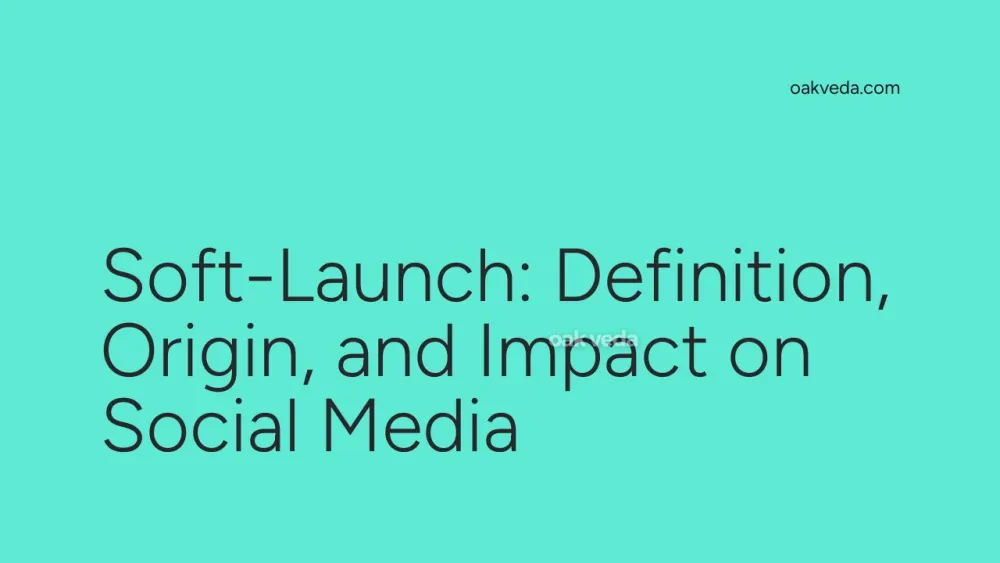
What is a Soft-Launch?
A soft-launch in social media marketing refers to the strategic release of a product, service, or campaign to a limited audience before its full public launch. This approach allows businesses to test the waters, gather valuable feedback, and make necessary adjustments before unveiling their offering to a broader audience.
Origin and Development of Soft-Launch Strategies
The concept of soft-launching has its roots in traditional marketing and product development. However, with the rise of social media platforms, this strategy has evolved to become a powerful tool in the digital marketing arsenal. Social media's ability to target specific audience segments and gather real-time feedback has made soft-launches more effective and accessible to businesses of all sizes.
How Soft-Launch Works on Social Media
A soft-launch on social media typically involves:
- Identifying a target audience: Selecting a small, representative group of users or customers.
- Creating exclusive content: Developing teaser posts, behind-the-scenes glimpses, or limited-time offers.
- Controlled release: Sharing this content with the selected audience through various social media channels.
- Gathering feedback: Monitoring engagement, comments, and direct messages to gauge initial reactions.
- Iterating and improving: Making necessary adjustments based on the feedback received.
- Preparing for full launch: Using insights gained to refine the strategy for the wider release.
Types of Soft-Launch Strategies
Different soft-launch approaches can be employed on social media platforms:
- Teaser campaigns: Gradually revealing bits of information to build anticipation.
- Beta testing: Inviting a select group to try a new product or feature before its official release.
- Influencer previews: Partnering with influencers to showcase the offering to their followers.
- Geo-targeted launches: Releasing the product or campaign in specific locations before a global launch.
Popular Examples of Soft-Launches on Social Media
- Instagram's IGTV: Before its full release, Instagram tested IGTV with a small group of content creators.
- Spotify's Stories feature: The music streaming giant soft-launched its Stories feature with select artists before rolling it out to all users.
- TikTok's e-commerce features: TikTok has been soft-launching various shopping features in different markets to refine its e-commerce strategy.
Impact of Soft-Launch on Social Media Culture
Soft-launches have significantly influenced social media culture by:
- Creating a sense of exclusivity and anticipation among users
- Encouraging more direct engagement between brands and their audience
- Fostering a culture of continuous improvement and user-centric development
- Blurring the lines between beta testing and marketing
How Brands and Influencers Use Soft-Launch
Brands and influencers leverage soft-launches to:
- Build hype: Generating excitement and curiosity around upcoming releases.
- Gather insights: Collecting valuable data on user preferences and behavior.
- Refine messaging: Adjusting their communication strategy based on initial reactions.
- Create FOMO: Encouraging wider adoption by showcasing exclusive access.
- Identify brand advocates: Recognizing early adopters who can become brand ambassadors.
Future Trends Related to Soft-Launch
As social media continues to evolve, we can expect to see:
- AI-driven soft-launches: Utilizing artificial intelligence to analyze feedback and make real-time adjustments.
- Virtual and augmented reality soft-launches: Offering immersive experiences to select users before full deployment.
- Cross-platform soft-launches: Coordinating limited releases across multiple social media platforms for a more comprehensive testing approach.
- Micro-segmented soft-launches: Targeting increasingly specific audience niches for more precise feedback.
FAQs about Soft-Launch on Social Media
How long should a soft-launch last?
The duration can vary depending on the product or campaign, but typically ranges from a few days to several weeks.
Is a soft-launch suitable for all types of businesses?
While soft-launches can benefit most businesses, they're particularly useful for those introducing new products, features, or entering new markets.
How do you measure the success of a soft-launch?
Key metrics include engagement rates, feedback quality, conversion rates (if applicable), and the volume of user-generated content.
Can a soft-launch backfire?
If not managed properly, a soft-launch could lead to information leaks or negative buzz. It's crucial to have a clear strategy and contingency plans in place.
How does a soft-launch differ from a beta release?
While similar, a soft-launch is often more marketing-focused, whereas a beta release is typically more technical and aimed at identifying bugs or issues.
In conclusion, soft-launches have become an integral part of social media marketing strategies. By allowing brands to test, refine, and perfect their offerings before a full release, soft-launches minimize risks and maximize the potential for success in the fast-paced world of social media.
You may be interested in:

